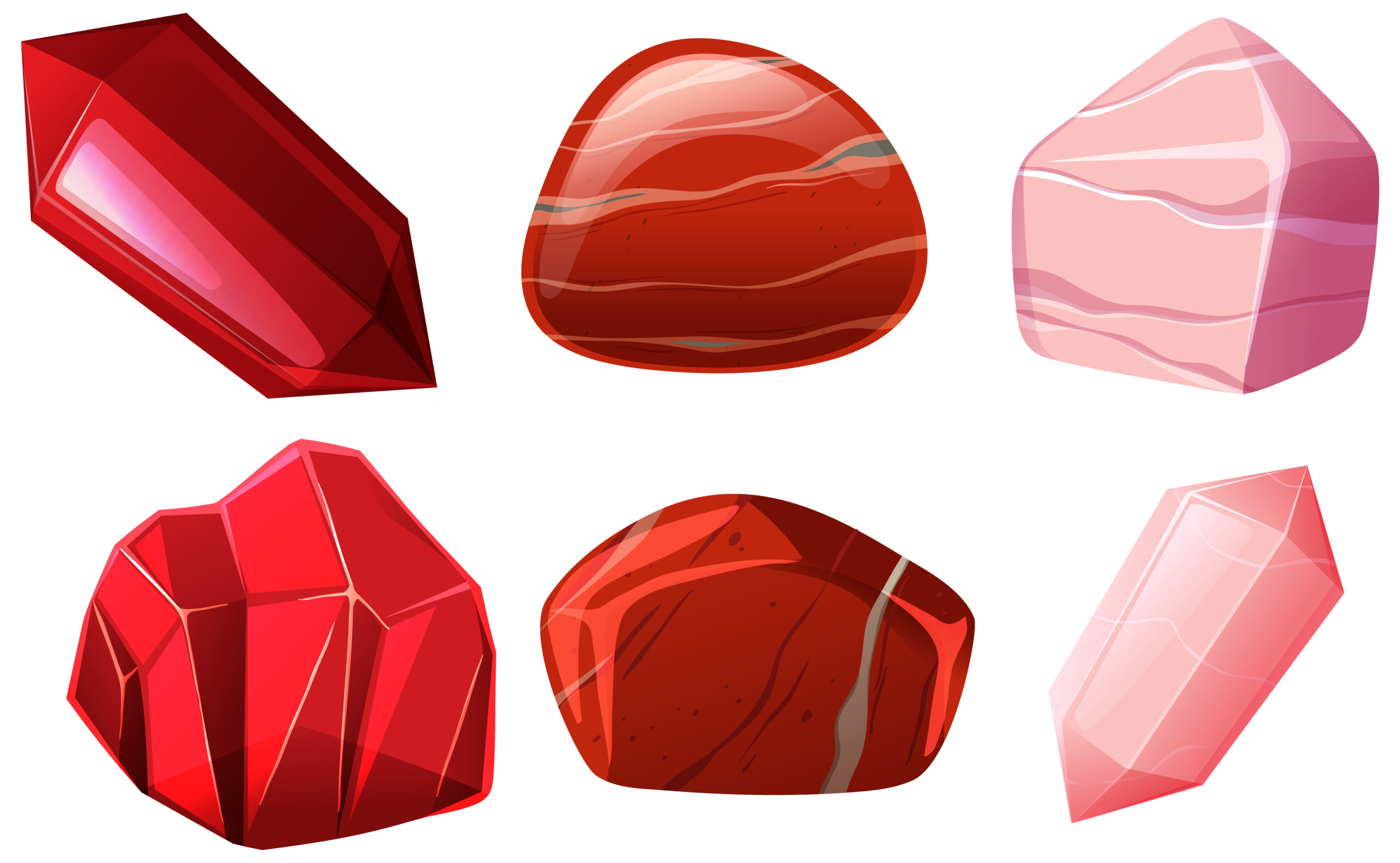Red gemstones have always been a symbol of love, passion, power, and energy. From ancient royal crowns to modern jewelry designs, red crystals and stones have remained timeless treasures. At Donghai Crystal Wholesale, we believe every red gem tells a story — one filled with warmth, elegance, and fiery brilliance.
In this guide, we’ll explore the most popular red gemstones, their types, meanings, and how to identify them, along with tips for choosing the perfect one for your jewelry.
What Are Red Gemstones and Crystals?
Red gemstones or red crystals refer to natural minerals that display shades ranging from light cherry red to deep wine hues. These stones include both precious and semi-precious gems, often admired for their beauty and metaphysical significance.
Some popular red gemstones names include ruby, spinel, garnet, tourmaline, carnelian, red jasper, and more. Among them, ruby — also known as red corundum — stands as the most precious and valuable.
Each stone has a unique chemical composition that gives it its distinct color and energy vibration. In general, chromium or iron impurities are what give these minerals their red tone.
Top Red Gemstones and Crystals for Jewelry
1. Ruby – The King of Red Gemstones
Ruby, the red variety of corundum, is the most iconic red gemstone. Its deep, saturated red hue symbolizes love and strength. With a hardness of 9 on the Mohs scale, ruby is extremely durable and perfect for rings, earrings, or daily wear jewelry.
Natural rubies often undergo heat treatment to enhance their color and clarity. You can also choose lab-created rubies, which offer the same beauty and strength at a more affordable price.
2. Red Spinel – The Hidden Gem
For centuries, red spinel was mistaken for ruby — even royal crowns were adorned with spinel gems believed to be rubies. Spinel shines with a bright red color and excellent brilliance. It’s durable, affordable, and an excellent choice for elegant jewelry designs.
3. Garnet – Deep Red Beauty
Garnet is actually a group of minerals known for their vibrant colors, but red garnets like pyrope and rhodolite are the most popular. These stones display a rich, velvety red tone and have been cherished since ancient times.
Garnets are semi-precious but still prized for their luster and symbolism of devotion and vitality.
4. Rubellite – The Red Tourmaline
Rubellite, the red or pinkish-red variety of tourmaline, is famous for its strong, vivid color. It may contain inclusions, but that only adds to its natural beauty. With proper care and a well-crafted setting, rubellite can make a stunning centerpiece for any jewelry design.
5. Carnelian – The Warm Red Crystal
Carnelian is a translucent red to orange variety of chalcedony. Its soft glow and warm undertone make it a favorite for beads, pendants, and carved jewelry. Historically, carnelian was used for protection and courage, symbolizing vitality and motivation.
6. Red Jasper – The Earthy Red Stone
Red jasper is an opaque, earthy stone known for its deep red tone. It is often used in spiritual and grounding practices. Though not transparent like ruby or spinel, red jasper is loved for its strength and natural charm, making it a favorite for handmade and boho-style jewelry.
7. Other Notable Red Stones
Apart from the classics, there are many other types of red stones to explore.
Red zircon shines with diamond-like brilliance, while red beryl (also known as bixbite) is a rare collector’s gem. Sunstone exhibits a sparkling effect known as “schiller,” giving it a glowing red-orange appearance. Red coral and rhodochrosite are also cherished for their unique textures and warm tones.
How to Choose and Identify Red Gemstones
When choosing a red gemstone, focus on color, clarity, hardness, and treatment. The color should appear rich and balanced — not too dark or too brownish. Stones with vivid, pure red tones and medium darkness are the most desirable.
Clarity is another key factor. Transparent stones like ruby and spinel with minimal inclusions are more valuable, while opaque stones like jasper or carnelian are prized for their natural texture and earthy appeal.
Durability matters too. Harder stones such as ruby or spinel are ideal for daily wear, whereas softer stones like coral should be used in protected jewelry settings. Always ask your supplier whether the gem is treated or natural. Treatments like heating or dyeing can affect value and care instructions.
If you’re unsure, lab testing or certification from trusted sources helps confirm the gem’s authenticity and origin.
FAQs
Q1: What gemstones are red?
Ans. A variety of gemstones appear red, including ruby, spinel, garnet, rubellite (tourmaline), red jasper, carnelian, red coral, sunstone, and red beryl. Each stone varies in hardness, rarity, and price, making them suitable for different jewelry types.
Q2: How to identify red gemstones?
Ans. You can identify red gemstones by observing their color tone, transparency, hardness, and internal features. Rubies, for example, have a strong red fluorescence and high hardness, while garnets show distinct inclusions and a slightly darker tone. Professional gem testing through refractive index and spectroscopy provides accurate identification.
Why Choose Donghai Crystal Wholesale
At Donghai Crystal Wholesale, we source and supply an extensive range of natural and treated red crystals, gemstones, and jewelry materials. From ruby and garnet beads to carved red jasper towers, we offer quality products at wholesale prices.
Whether you are a jewelry designer, collector, or crystal enthusiast, you can trust us for authentic, ethically sourced gemstones. Explore our catalog today and discover how red gems can add warmth, beauty, and timeless appeal to your designs.

